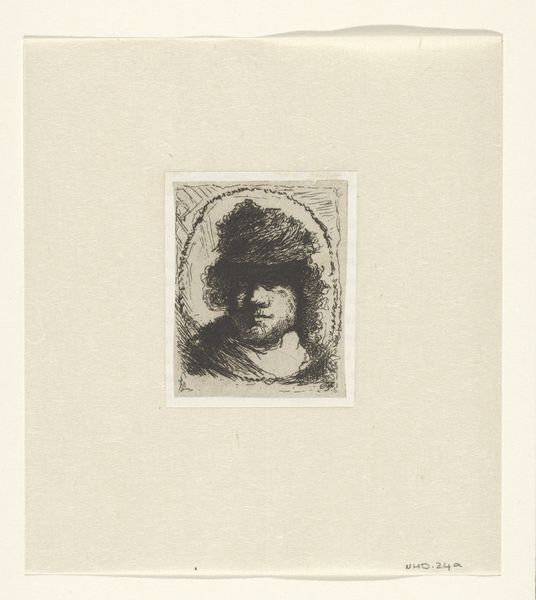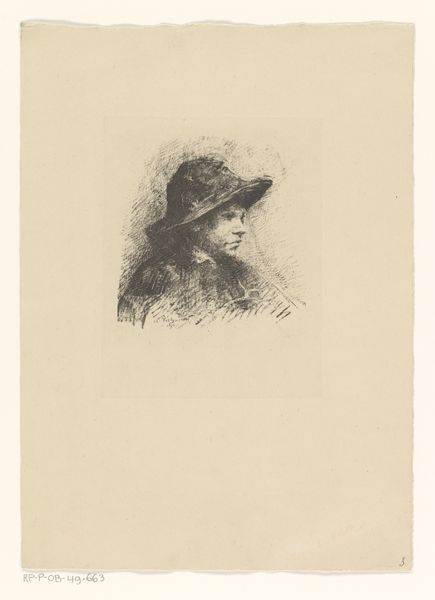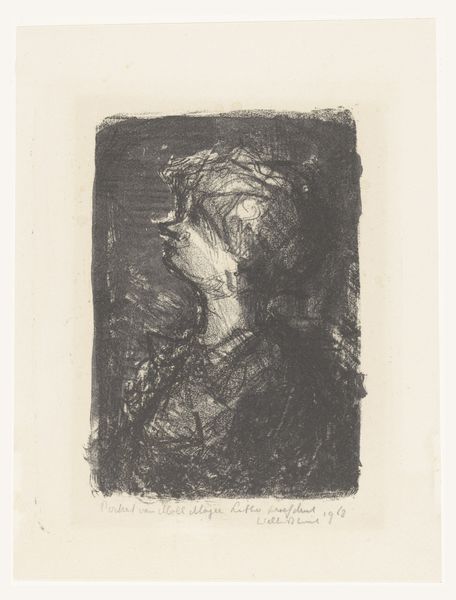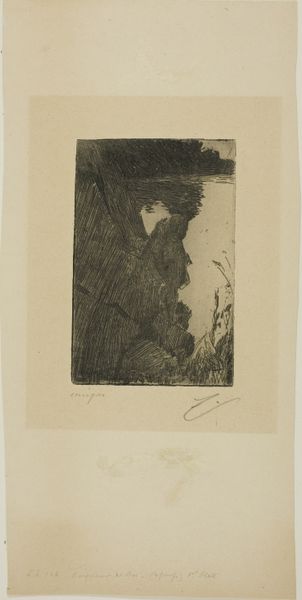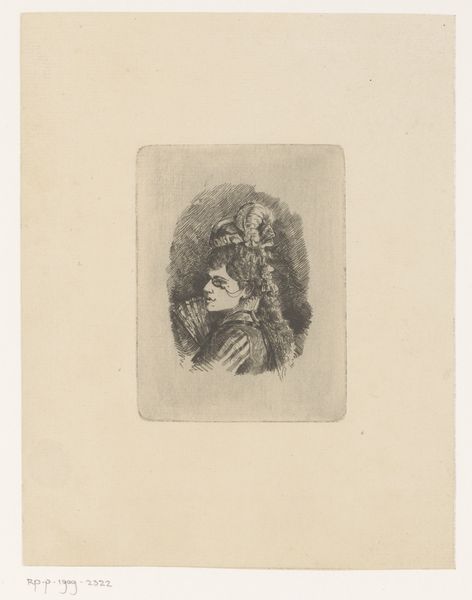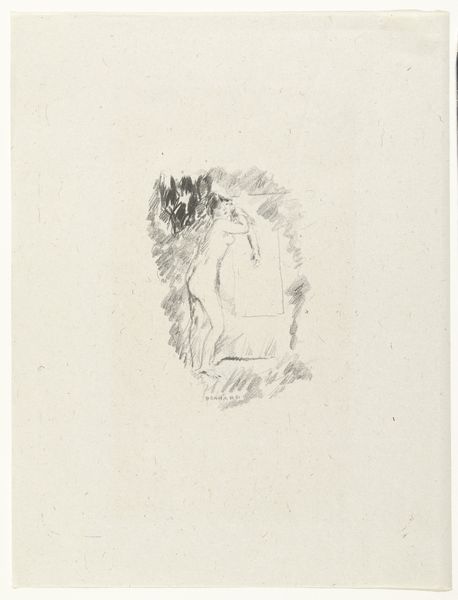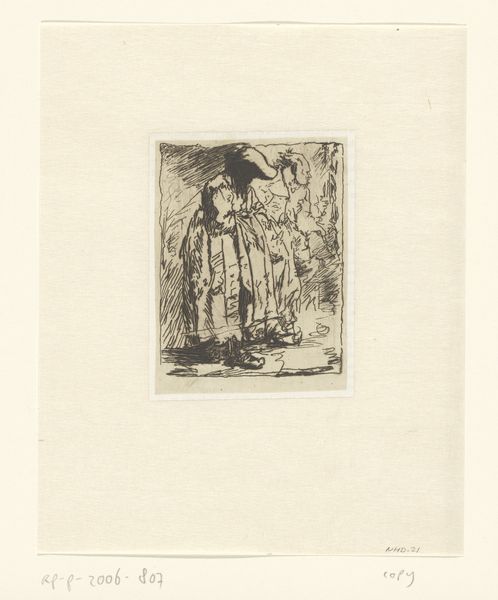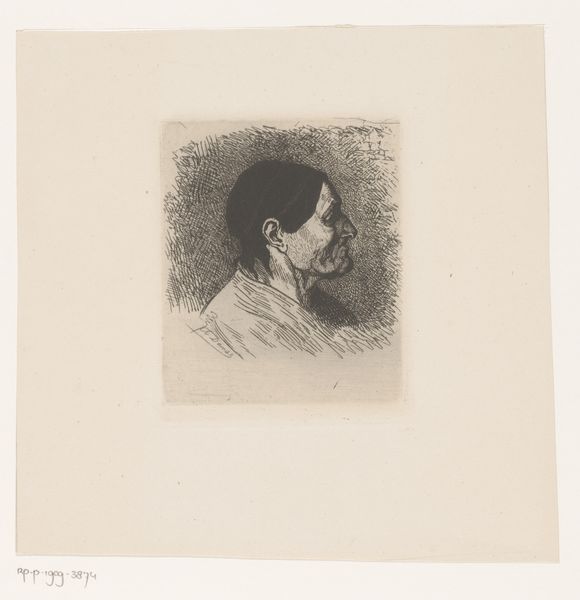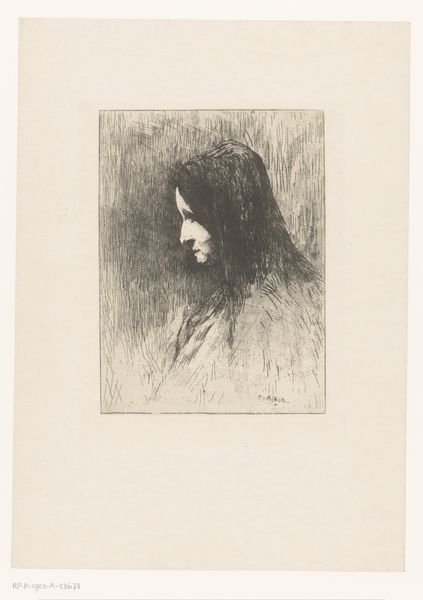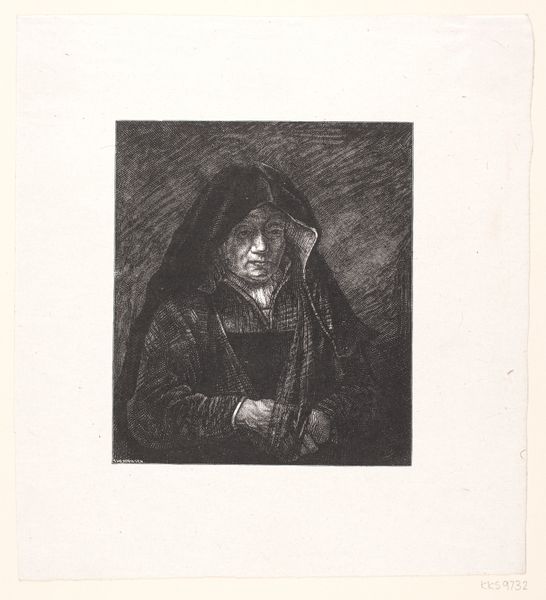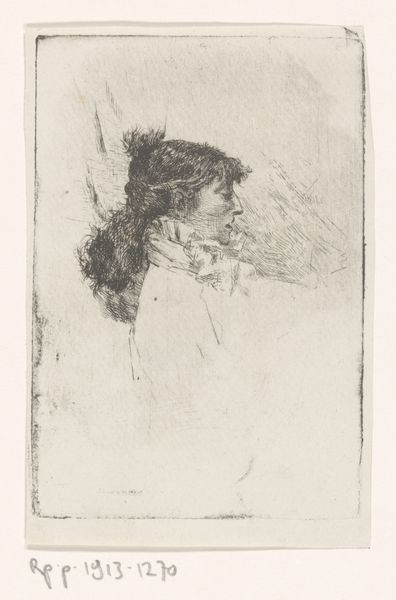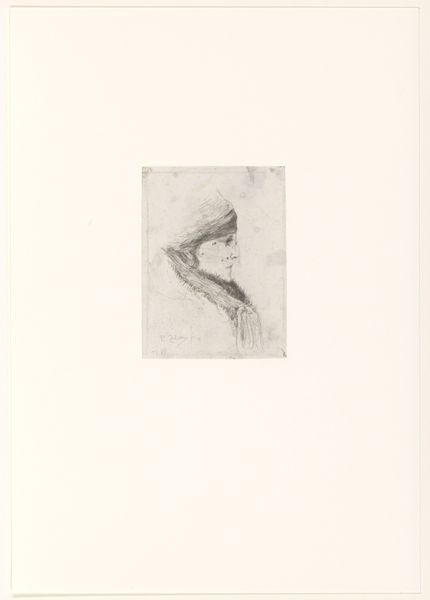
drawing, print, etching
#
portrait
#
drawing
#
self-portrait
# print
#
etching
#
figuration
#
line
Dimensions: height 69 mm, width 68 mm
Copyright: Rijks Museum: Open Domain
Editor: So, this is "Self-portrait bare-headed: bust," an etching by Léopold Flameng, made in 1859. It’s quite small, and the lines are incredibly detailed. What strikes me most is how raw it feels, almost unfinished. What can you tell me about it? Curator: I find myself drawn to the physicality of the etching process itself. Think about the copper plate, the acid, the skilled labor involved in producing each impression. This image isn’t just a portrait; it’s a document of industrializing artistic production. The multiple prints would make the artwork available to middle class in France at the time, but still maintain exclusivity since they are manually etched. Editor: That's interesting. I hadn't considered the printmaking process so deeply. So, are you saying that the value of the portrait comes not just from its aesthetic qualities, but also from the labor involved in its creation and distribution? Curator: Precisely. We often overlook the socio-economic factors that underpin artistic creation. What was the cost of the materials? Who was buying these prints, and what did owning art signify in 1859? It's essential to remember that art objects are products of their time, shaped by economic and social forces. Does considering it through this materialist perspective change how you interpret it? Editor: It does! I see now that Flameng wasn’t just creating an image of himself. He was also participating in a larger system of production and consumption, one where art was becoming increasingly commodified and accessible. It is fascinating how a “simple” self-portrait could be viewed through such different angles. Curator: Indeed. Analyzing art through a material lens opens up new avenues for understanding its meaning and purpose within its historical context.
Comments
No comments
Be the first to comment and join the conversation on the ultimate creative platform.
